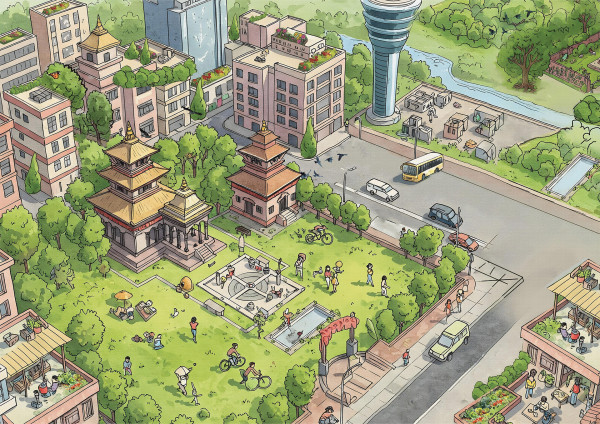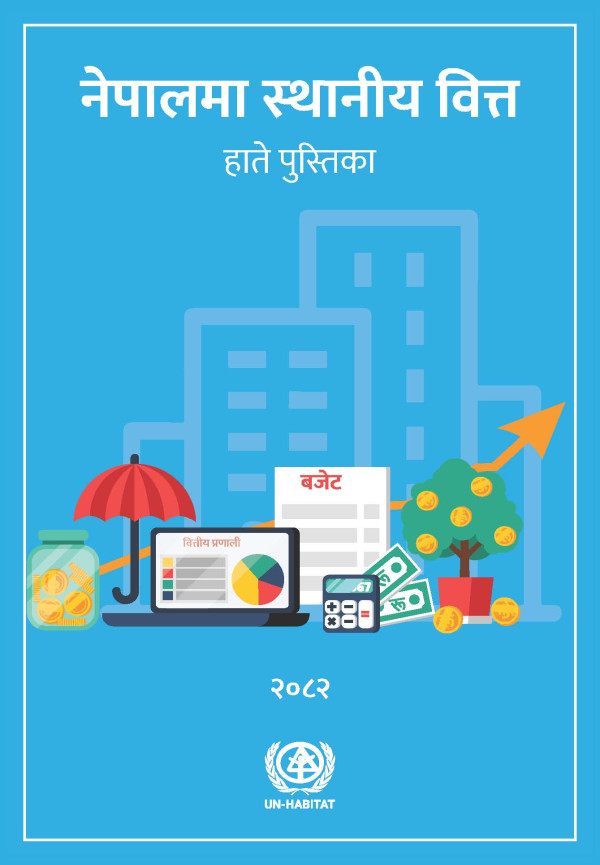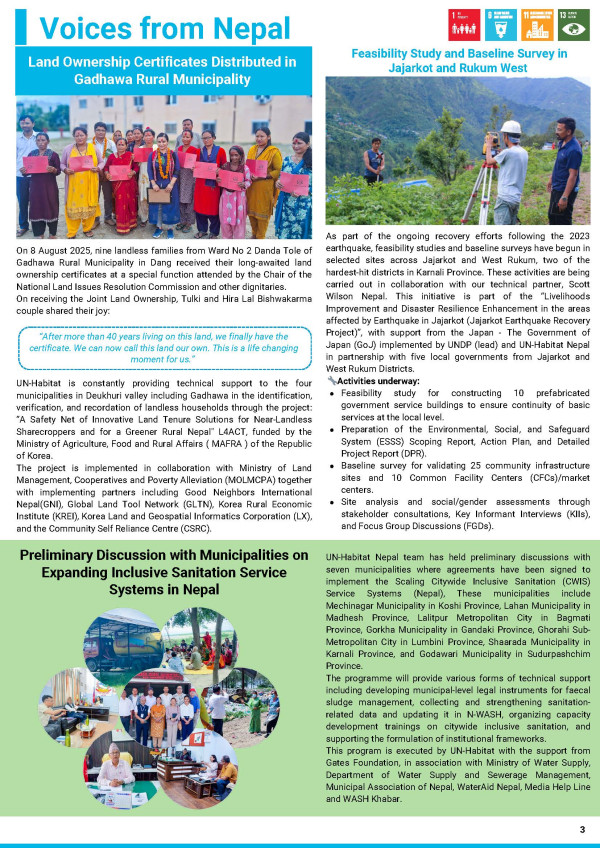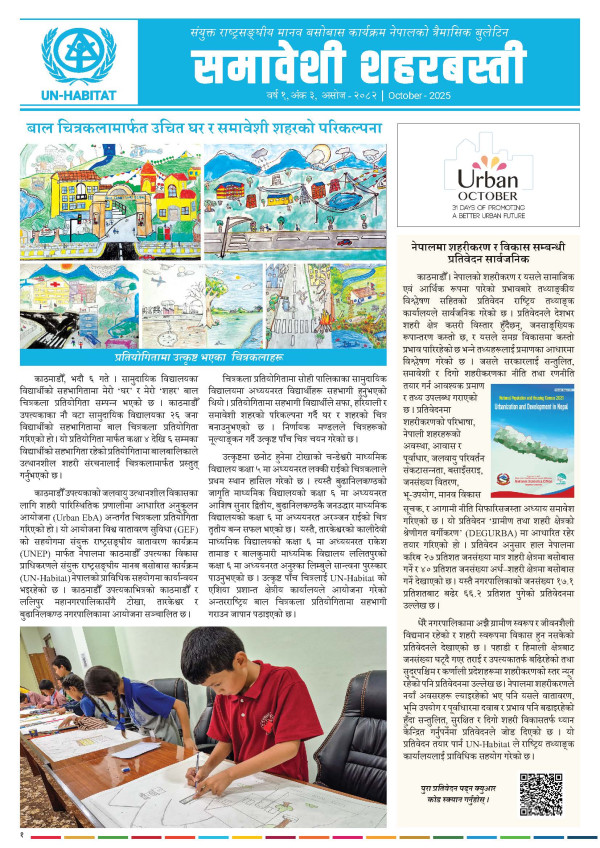EU SUPPORT TO BUNGAMATI Reviving City
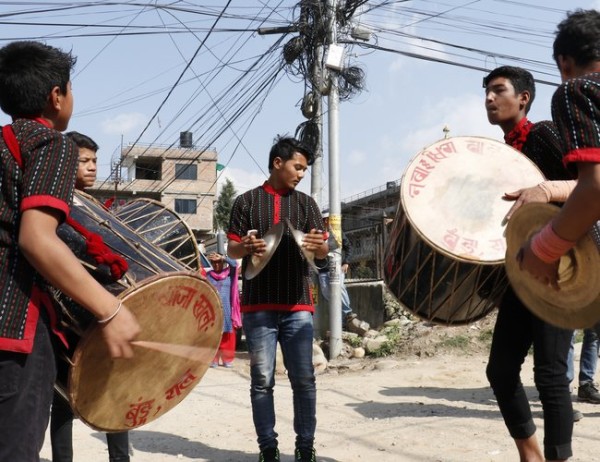
Driving a few kilometers from congested and crowded urban settlements
of Patan and Kathmandu, one can find well-preserved traditional Newari
settlements in Bungamati and Khokana.
These two Newari settlements showcase how heritage sites restoration
and promotion of traditional livelihood need to be taken side by side to
promote sustainable and green growth in heritage settlements.
This is also an example to show how different organizations can work
together to Promote Sustainable Tourism and Green Growth in Heritage
Settlements of Kathmandu Valley, contributing to the overall SWITCH Asia
objectives of promoting sustainable development, and reducing poverty and
contributing toward mitigating climate change. European Union has been
financially supporting the project.
Following the completion of the project, it has been promoting entrepreneurship among women and youth. With SME engagement and investment, product innovation and sector campaigns, the project hopes to support the livelihood of the people.
One can find the preservation of traditional attire, music and foods of
Bungamati at work in a traditional Newari settlement.
Handed over to the local community last February 2021 by the ambassador
of the European Union to Nepal Nona Deprez and Mayor of Lalitpur Chiri Babu
Maharjan, Khokana and Bungamati are now attractions of domestic tourists as
well.
Along with the private houses, community-owned Falchh, Pati, stone
spout, traditional well, traditional ponds, street solar lights, renovation of
public toilets and viewpoint have already been constructed.
Damaged and devastated by the Gurkha earthquake in 2015, the Newari
settlements have been revived, preserving their past glory.
Parya Sampada Project funded by European Union Switch-Asia Program
assists Nepal Government in rebuilding and revitalizing the tangible and
intangible heritages of Bungamati and Pilachhen.
“The Project joins hands with the Ministry of Urban Development,
Ministry of Culture, Tourism and Civil Aviation for regular consultation and
policy level reforms whereas Lalitpur Metropolitan City is co-partner for
implementing the assigned activities and programs in Bungamati and Pilachhen,”
said Prabin Bajracharya from UN-Habitat.
“Parya Sampada mainly engages in two heritage settlements of the
Valley. Heritage conservation has already started at the community level in
Pilachhen Lalitpur Municipality (LMC) Ward No 7 and Ward No 22 of Bungamati,”
said Bajracharya.
UN-Habitat along with its partner organization Centre for Integrated
Urban Development (CIUD) SAARC Business Association of Home-Based Workers
(SABAH) and Lumanti are supporting fostering the tangible and intangible
heritages of Bungamati and Pilachhen area.
Funded by European Union’s SWITCH Asia’s Sustainable Tourism and Green
Growth Project and implemented by UN-Habitat in collaboration with the local
community, NGOs, Lalitpur Metropolitan and NRA, Sustainable Tourism and Green
Growth for Heritage Settlements of Kathmandu Valley is a game-changer to
improve the sustainable livelihood of local people.
Along with the construction of tangible heritage sites, the project has
also contributed to promoting local handicrafts, music and food providing
training to the local youth.
“As we have provided skill training to youth making traditional foods
like Yomari, musical instruments like flute and handicrafts. Similarly, we also
provided entrepreneurship training equipping skills for organized business and
digital marketing,” said Deepak Basnet, Community Development Officer of
SABAH-Nepal. These training enhanced the capacity of local people in marketing
and make their business organized.”
The earthquake damaged 563 of 856 houses in the core area of Bungamati.
Most of the buildings that survived were also badly damaged and were left
unusable. Major temples and shrines were lost including Machhendranath, Hyagriv
Bhairav and Manakamana temple. The biggest loss was the private houses with
heritage values. In the last six years, almost everything has been revived.
With the revival of the city, local communities of Bungamati have
already seen the results. Although COVID-19 has badly shaken Nepal’s tourism
sector due to the lack of foreign tourists, Khokana and Bungamati are
attracting domestic tourists.
During the last four years, Bungamati and Khokana have seen being
drastically transformed as cities suffering devastation and destruction to
cities reviving their traditional settlement.
Training for Youth
With a strong pool of young trainees with it, Bungamati has enough
strength for the sustainable livelihood of the local community.
During the project period, a total of 320 locals have been trained on
various skills like Yomari Molding, Wood Craft, Homestay Management, Cooking
and Food Processing, Dhime Instrument, Lakhe Dance, Pickle production, Bhyo,
Advance stitching, etc. Other 228 locals, including 182 females, were trained
in Entrepreneurship Development.
Realizing the importance of a formal institution to train the local youth, the project has designed a training center. This is a major part to train youths in traditional skills. This is important for sustainable tourism promotion and employment generation.
“LMC and local community are very grateful to European Union for its
support and UN-Habitat and other NGOs for their contribution to restoring the
cities in the old style,” said Mayor of LMC Chiribabu Maharjan.
Backed by Lalitpur Metropolitan City Ward 22 and Bungamati Area
Reconstruction and Development Council (BARDeC), the project
Implementation partners include UN-Habitat for Overall implementation,
Centre for Integrated Urban Development (CIUD) Heritage conservation, LUMANTI
Community mobilization, SAARC Business Association of Home-based Workers-
SABAH-Nepal for Livelihood and tourism promotion and Institute of Housing and
Urban Development Studies (IHS) for capacity building.
Had the UN-Habitat not sought solutions through sustainable tourism,
Bungamati would also not have revived as it is today. UN-Habitat launched the
project with the main objective of reducing poverty by building the economy
people contributing to mitigating climate change, and promoting sustainable
development through technical assistance, policy support and pilot
demonstration.
Community mobilization, heritage conservation and livelihood
enhancement are three pillars of the project. These are key factors for the
revival of Bungamati as well. During the visit of ambassador Deprez, local
people have shown how their tradition and culture can lure tourists in the
future thanks to the support of the European Union.
Promoting Tourism Through Youth
Tourism has benefited greatly from the use of social media. Because
youth are active on social media, content about Bungamati could attract more
youth visitors.
People have a connoisseur within them. They immediately draw their
attention to everything that piques their curiosity. When it comes to youth,
they like traveling, doing new things, and acquiring as much experience as
possible in a short amount of time. New, gorgeous, and adventurous destinations
excite today's youth. They search for intriguing details, large and tiny, and,
most importantly, they seek out new experiences, adventure, and taking chances.
Whether it is going on a trip, eating with friends, seeing a movie, or simply
hanging out, adolescents find ways to have fun.
Bungamati is an ancient Newar settlement in the Lalitpur Metropolitan
City in the Lalitpur District. This settlement has numerous religious and
cultural sites such as Machhindranath temple, Hyanbribh Bhairav, Karyabinayak
temple, Manakamana temple and Prathampur Mahavihar. It is one of the sacred
places for thousands of Hindu and Buddhist followers. One can see the
involvement of youth during the procession of various Jatras and festivals like
Machhindranath Jatra, Bhairav Jatra, hanuman Jatra, and Karya Binayak Jatra and
so on.
Bungamati has a long and illustrious history. All festivals are rooted
in folktales that have been passed down from generation to generation. These
festivals are fun to attend and are a great alternative to looking at a screen
for the entire day. The god Machhindranath is also known as the patron of
Kathmandu Valley. Month-long chariot pulling festival of Machhindranath is an
homage to the rain god and youth of all backgrounds participate in this
festival.
Local delicacies often tell a lot about the place itself. Bungamati has
many places where visitors can try out authentic Newari food. Bungamati offers
it all, from well-furnished restaurants to tiny eateries. Bungamati is the
finest place to experience what a Newar community feels like. In addition to
the cuisine, youth from every community will get an opportunity to learn about
culture, and arts and meet people from the Newar community. Also, youth from
the Newar community will get a chance to be connected to their roots since it’s
no surprise that modernization has disconnected them from their roots.
Bungamati has gone a long way since the 2015 earthquake that struck
Bungamati very badly, causing many lives and livelihoods of people to suffer.
It is estimated that the earthquake destroyed about 54% of the houses
completely while 35% were partially damaged, leaving only 11% undamaged. It is
believed that almost 83% of houses were built 100 years ago and 17% were built
50 years ago. Unfortunately, those houses carrying historical and cultural
values were badly impacted by the earthquake. Efforts for rehabilitation were
initiated but they did not continue to yield meaningful results due to several
concerns such as financial and land ownership issues.
European Union’s SWITCH-Asia funded Sustainable Tourism and Green Growth for Heritage Settlement of Kathmandu Valley (Parya Sampada) project, implemented by UN-Habitat aims to promote sustainable tourism and green growth in the Kathmandu Valley. The project has been supporting reconstruction activities and improving the livelihoods of people in Bungamati. The project is also supporting the preparation of various policy documents for Lalitpur Metropolitan City such as the Green Development Policy, Sustainable Tourism Development Policy, and Heritage Settlement Recovery Policy.
As youth and women are key beneficiaries of the project, the project
has trained 448 youth and 495 women in entrepreneurship development. Similarly,
311 youth and 332 women have been trained in a variety of sectors such as
hospitality, handicraft, and cuisine. These activities contribute to youth and
women becoming independent at the same time supporting the Government of Nepal
to achieve SDG No. 8- decent work and economic growth.
Twenty-five years old Sonam Tamang nowadays conducts the city tour as a
guide in Bungamati. Although Tamang was born in Dhading, he grew up in
Bungamati with a passion for art and craftsmanship. Tamang, who worked as a
porter, is now living as a tour guide. He learned the basic concepts of the job
as a guide and knows how to integrate information about ancient cultures,
history, culture, art and drawing historical structures from the Newar
community.
In addition, the Parya Sampada project has provided various software
and hardware support to youth by providing training on advanced woodcraft, home
stay management, pickle making, smart agriculture on fruits & vegetables,
bhoy (Newar cuisine), advanced stitching, bakery, flute, lakhe dance (dance of
a demon in the Newar carnival), dhime Baja (important musical instrument of
Newars), food processing, yomari making (a delicacy of Newars), tour guide,
entrepreneurship development and so on. These activities have enabled the youth
of Bungamati to conserve both tangible and intangible heritage, thereby
expanding economic activities in their localities.
The partnership with local communities to re-build and revive the
tourism activity while preserving their traditional values and culture is an
exemplary initiative and might just be another reason to visit Bungamati in
addition to tasting the authentic food and experiencing culture and traditions.
It is unrivaled in terms of appearance and aesthetics as well. This settlement
has all to draw folks in because there aren't many automobiles or people to
disturb the serenity; therefore the setting is very peaceful.
Internal tourism has been moving at a high pace these days and the
potential to promote it is endless. Visiting Bungamati provides two main
messages. The first one is the local culture and the second is how Bungamati
was able to revive its economy in the aftermath of the earthquake
(reconstruction activities) and the COVID-19 outbreak. Internal tourism not
only contributes to reviving the economy, but it also provides various
opportunities to the youth of Bungamati. If we examine closely, there are clear
linkages between youth, culture, and tourism, hence the youth have a bigger
role to play to promote internal tourism and become a part of the local
culture, and the economy of the country.
SABAH Nepal, an active partner of the Parya Sampada project funded by
the European Union Switch Asia Program conducted a 5-day training from August
17 – 21, 2021 in collaboration with the Tourist Guide Association of Nepal
(TURGAN) and relevant local governments. About 22 youth with 70% of girls
participated in this initiative.
Ward Chairperson of LMC Ward 22 Bungamati Ambir Shakya said local government is always available for any kind of support for youth taking up a career as a local guide. He added that the local government will provide ID cards to local guides as recognition.
Source: https://www.spotlightnepal.com/2022/04/27/eu-support-bungamati-reviving-city/


